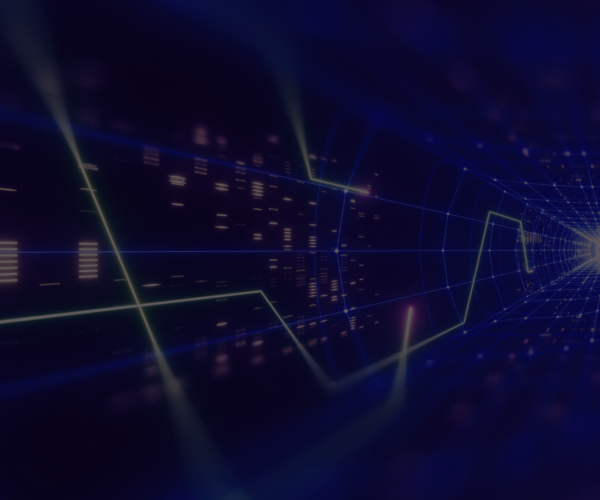Pragmatic Innovations - what does R&D consultancy look like?
A few weeks ago, in an article "Pragmatic innovations" we wrote about the beginnings of Crido R&D and described the challenges that Crido faced after deciding to add the technology branch to the list of our services. We also explained why such a decision was made. If you haven't read it yet, I strongly encourage you to do so (follow the link below).
It is common knowledge that enterprises pursue research and development activities, but for many people it is not always obvious what an R&D team acting as external support can do. We often hear questions about what it is exactly that we do and how our work looks. So, allow me to tell you briefly what our everyday life looks like.
I have grouped the information about our R&D team in as accessible a way as possible under the following questions:
- who we can work for;
- how we can help;
- on what terms we cooperate.
Fasten your seat belts and welcome to the world of Crido R&D!
About the team
First, let me just say that although we work under the umbrella of a consulting company, we are not typical consultants. Of course, a large part of our work is of this nature, but the value of our team lies mainly in the possibility of physical implementation of our theoretical work. This makes us more a subcontractor or, as I like to call us, an "external R&D department".
What also makes us different from typical advisors is the fact that we develop our own devices and technologies. This is possible because the team combines very creative people with extensive scientific and engineering achievements with experts in monetization and implementation of innovation on the market. I don't have to convince anyone that such an "explosive mix" leads to outbursts of innovation and new internal projects. We are working on a number of them at the moment, but this is a subject of a separate article.
R&D is tough
Despite spending some of our time on developing our own technologies, in our everyday life we are mainly focused on working for external clients. The scope of ongoing projects is very wide. From our previous article you would have learnt that some companies need support already at the stage of defining project assumptions, in order to later successfully apply for funding. Translation of business needs into a technological level is also a big problem, not only when applying for subsidies. This is often the starting point for cooperation with our clients. The project is not completed until we can provide a proven and working innovative solution.
The market is full of the so-called quick, fool-proof recipes for easy innovation. Others say that truly groundbreaking solutions are accidental. We will not negate techniques such as brainstorming, but we recognize that it is most useful for simple problems that can be solved within the comfort zone of the team that is involved. Professionals and giants do not leave their future to fate. Truly valuable, predictable and measurable effects are obtained only with a systematic, truly algorithmic approach to the entire R&D process - from defining the problem to the physical implementation of the solution.
Do all large R&D teams operate in accordance with this principle? Can medium and small companies afford to maintain such a dedicated team? An ideal answer for just both type of companies can be the external R&D team, which is specialized in "producing" practical innovations.
Where to start implementing innovations?
As I mentioned before, an important part of the research process, from which we usually start working with the client, is to translate business problems into technological ones. However, before we start solving a problem, we must first examine the technological situation of the company. Where and what potential the client's company has can often affect not only the way of determining the optimal solution to the problem, but also, in extreme cases, the company's business strategy, through discovering new hidden opportunities.
Depending on the specific case, this type of analysis provides an overview of the product portfolio and production processes. We define:
- Main Parameters of Value (MPV), i.e. product features that have value for the client that determine their purchase,
- Function Models of technical systems, describing parts of the product interacting with each other and the environment, and performing specific functions,
- List of technologies used to implement these functions.
The modeled results allow us to determine and compare entire systems or their parts with the client’s competitors, determine the unused potential of the solutions used, as well as diagnose inefficient parts of the systems. The material prepared in this way is therefore extremely useful, not only for increasing efficiency or reducing costs, but also for discovering a whole range of hidden possibilities.
Take MPV as an example. Each entrepreneur can easily compare with the competition in the context of the basic parameters of his product. In other words, it's easy to determine which product is cheaper, which works faster, etc. Listing and comparing these parameters is just the beginning. Entrepreneurs can work out on their own which parameters decide about the purchase from particular types of clients. The situation gets a little more complicated when you have to predict how a product will develop. Maybe it will be enriched with new functionalities? But how to find them? Clients are usually confused when asked about new functionalities. As we mentioned earlier, brainstorming, although useful, is of very limited use in this area. However, through our systematic approach, we often discover the hidden potential of the system to perform new functions. Of course, the attractiveness of such potential functionalities must be made clear to the client, but this is no longer a major problem.
Another example of the benefits of using a systematic approach is finding a "new life" for old technologies or acquiring new technologies for use in our products and production processes. Thanks to functional modelling, it becomes possible to transfer technologies between various industry branches. After the function is generalized and the best-fit technology identified, what remains is only the adaptation problem. Good examples and excellent results are particularly visible in large players who benefit from the re-use of once developed solutions in many of their products. Of course, nothing prevents us from applying this approach also to smaller companies.
These are just two examples from the list of ways of using technical systems modeled according to this formula. Some other interesting uses include:
- which product from the portfolio should be developed,
- what is the possible direction of development for the given product type on the market,
- development of which product features will ensure its market value increase,
- what might be potential niches on the market for products with specific characteristics.
Another part of the analysis is the state of intellectual property (IP) protection in the company. Unfortunately, companies often neglect this aspect, insufficiently protecting their solutions or not taking effective steps in circumventing the barriers put in place by their competitors. Without going into details, patent protection is based on independent claims of the product or process. Products and processes are usually described in the form of system components and their functions. Sounds familiar, right? Again, we can use a systematic, functional approach to the description of the technical system for comprehensive and effective protection of IP. The methods we use allow us not only to describe the system we want to protect but also to understand the protection described by the competition. This opens up the possibility of circumventing the competitor’s patent or strengthening the existing protection (by attempting to circumvent your own patent). These and other basic activities lead to the development of entire strategies, including:
- building a protective IP umbrella for the entire portfolio,
- setting protection strategies in the context of development potential,
- negotiations on the valuation of the license to use a competitor's proprietary technology.
Once we know
After examining the client’s real needs that will ultimately affect their situation, we can finally start solving the problem. Of course, some companies report to us already at this stage, knowing what problem they need to solve. This allows us to skip the analytical phase, but does not rule out taking further steps.
Most often we encounter problems related to increasing efficiency, improving performance parameters or reducing costs (this last aspect is appreciated by clients in all our projects). Sometimes clients are also interested in creating a revolutionary new generation product that leaves the competition behind. There are also projects involving effective recycling, failure anticipation or discovering the hidden causes of failure. The same applies to processes. In addition to typical improvements, cost cutting and elimination of production problems, the methodology allows us to develop innovations in the field of logistics and supply chain improvement or the use of production waste.
A word or two about how each project ends. The key is not only to propose a solution, but also to check the possibilities of its practical application. The client receives physical evidence in the form of a tested demonstrator or prototype with development and testing documentation. We build and test most devices in our own dedicated workshop and laboratory. However, part of the work is subcontracted to proven external partners. We also check all our solutions for IP protection.
It's easier when we all understand each other
Clients expect from us not only the end result itself but also an understanding of the process that led to it. So, we decided to involve, whenever possible, willing client representatives in the ranks of the team working on the client’s project. This is beneficial to both parties. Being able to understand our actions, the client feels control over how the work proceeds. We, on the other hand, have easier access to the knowledge of internal experts and a lower risk of the result being rejected due to misunderstanding or lack of acceptance of the solution (we tend to criticize solutions developed by others).
Flexibility of form
Although I mean what I have said a few paragraphs earlier that each project has a similar structure, I am well aware that, upon closer inspection, all projects differ more or less from one other. Client needs and characteristics are also different. That is why we are very flexible in agreeing on the form of cooperation. In addition to typical research projects on behalf of the client, we also advise institutions in assessing the market potential of companies and technologies. We are open to other forms of cooperation, such as joint development of technologies financed from grants and development of projects to meet the subsidy criteria. We help promising start-ups to help solve the problems of young technologies in exchange for shares in their ownership. We are not limited by geographical restrictions either. We regularly run projects in Europe, Asia and both Americas.
Listen





